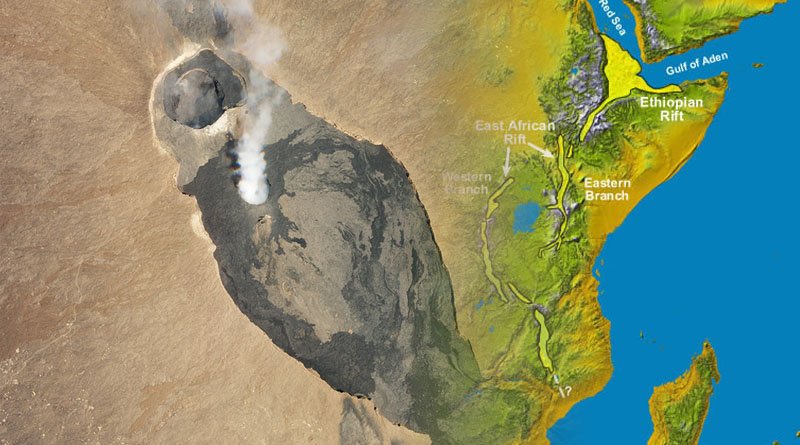The crack has been identified as being at the border of three tectonic plates (African Nubian, African Somali, and Arabian) that have been separating themselves for some time.

The East African Rift, a 35-mile-long fissure in Ethiopia’s desert that first appeared in 2005 and signalled the beginning of the formation of a new sea, was highlighted in the study that was published in the peer-reviewed journal Geophysical Research Letters. There may very well be a brand-new ocean in the distant future, right in the middle of the African continent.
Two significant regions of the continent have been found to be beginning to separate, which may eventually cause a slow formation of a new body of water, with landlocked nations like Zambia and Uganda possibly developing their own coastlines in a few million years.
The crack has been identified as being at the border of three tectonic plates (African Nubian, African Somali, and Arabian) that have been separating themselves for some time. In the study, seismic data was also presented to show that the formation of the rift was driven by tectonic processes similar to those occurring at the bottom of the ocean.
An oceanic rift can only be studied in this location on Earth, according to Christopher Moore, a doctoral candidate at the University of Leeds. The formation of the Red Sea and Gulf of Aden between East Africa and Western Asia is noteworthy as a result of these tectonic shifts.
The land movements between these tectonic plates have been observed through GPS tracking to be ongoing, though at varying rates. For instance, the Arabian plate is moving away from Africa at a rate of one inch per year.
Professor emeritus of marine geophysics at the University of California Ken Macdonald, said, “As we get more and more measurements for GPS, we can get a much greater sense of what’s going on. The Red Sea and the Gulf of Aden will merge to form a new ocean and flood over the Afar region and into the East African Rift Valley, separating that portion of East Africa into a new, tiny continent.
